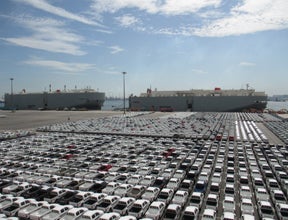South Korea’s largest automakers face continued pressure on earnings, with the US yet to follow through on an agreement reached at the end of October to cut tariffs on South Korean imports to 15%. Hyundai Motor and Kia Corporation, which rely heavily on exports to the US, reported sharp earnings declines in the last two quarters of the year, blaming these largely on the 25% import duties introduced by the US government in April.
US President Donald Trump and South Korean President Lee Jae Myung met on the sidelines of the Asia-Pacific Economic Cooperation (APEC) Summit in South Korea at the end of October 2025, where they announced a tentative trade agreement after their teams of negotiators ironed out some of the key outstanding issues, including South Korea’s commitment to investing US$350 billion in the US.
South Korea’s three largest automakers, Hyundai, Kia, and GM Korea, exported more than 1.5 million vehicles to the US combined last year, worth some US$ 38 billion. While Hyundai and Kia have vowed to continue to expand production capacity and local sourcing in the US, following the opening of a new vehicle production plant in the US state of Georgia a year ago, they claim to be disadvantaged in the US market compared with European and Japanese automakers, which now incur import duties of 15%.
There is growing concern that GM may pull out altogether from South Korea, where it produced some 500,000 vehicles last year, if its products become uncompetitive in the US market. GM Korea is understood to have shipped around 80% of its output to the US last year.
Industry observers in South Korea have confirmed that the US has yet to follow through on the agreement by cutting duties on South Korean imports from 25%, and are calling on the Trump administration to cut tariffs to 15% retrospectively starting from 1 November.









